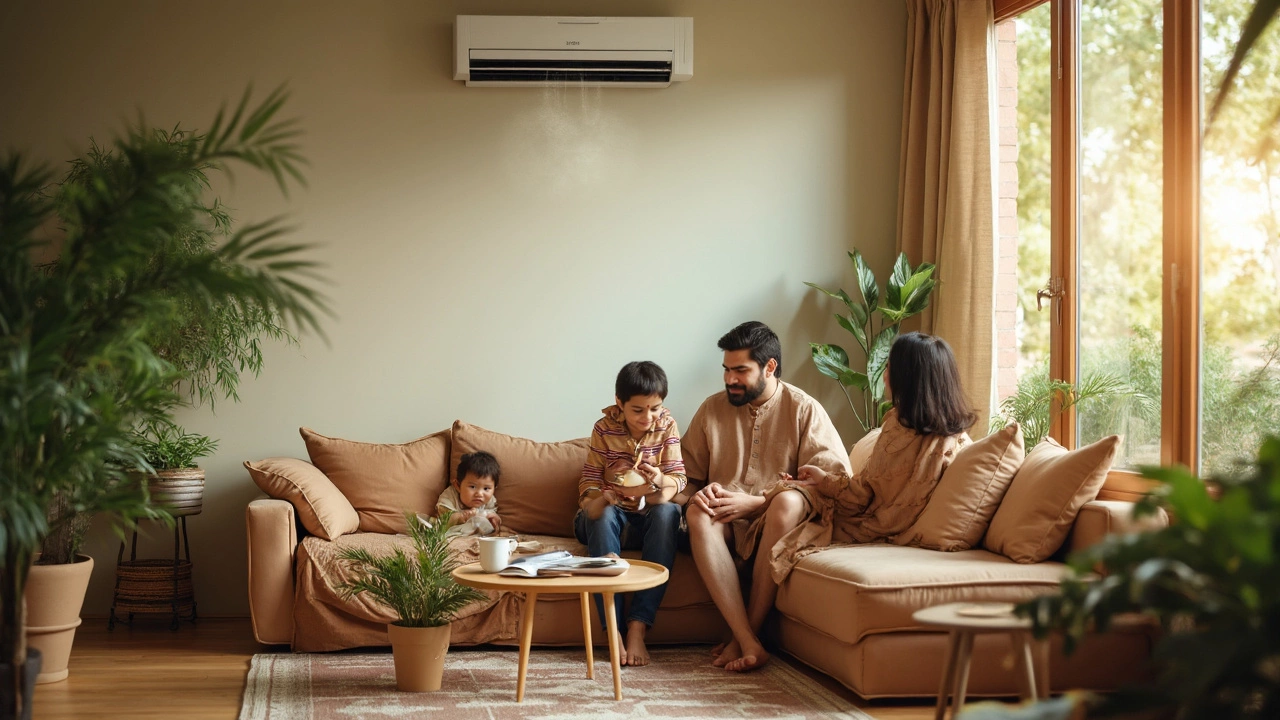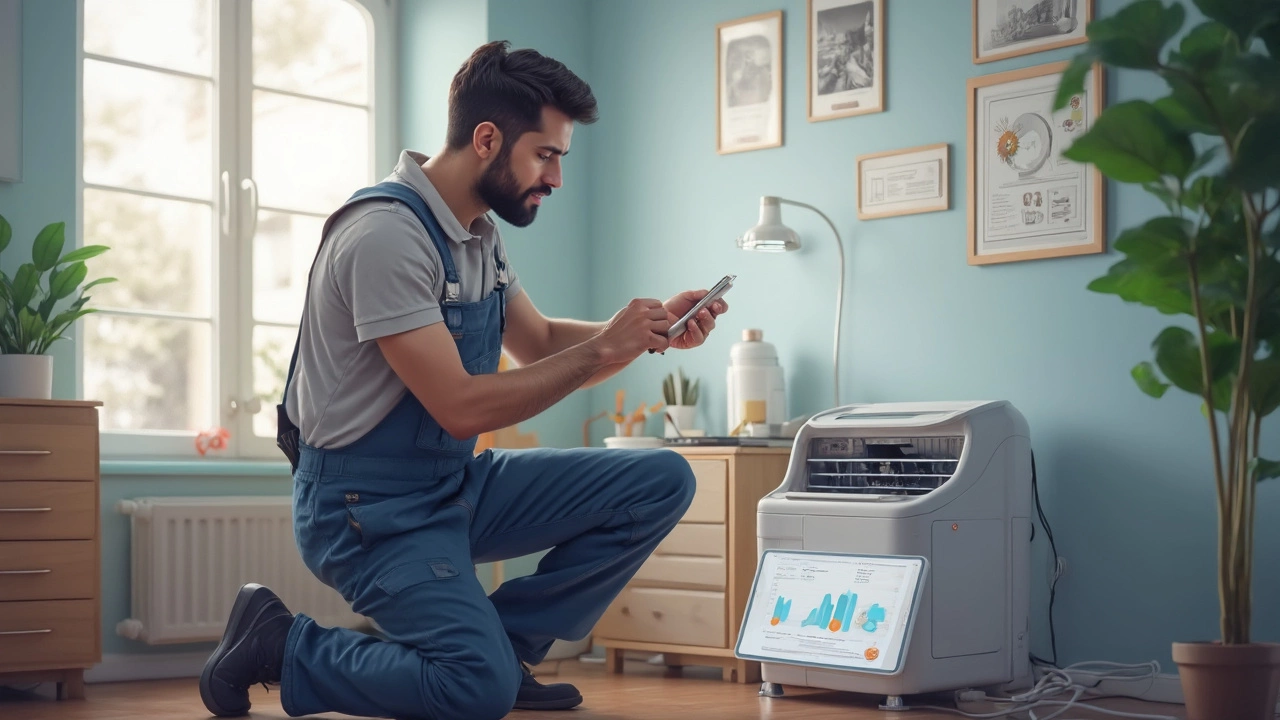
Picture this: you walk in after a day out, take a breath, and your home smells—well, just like air. No hint of pet, perfume, or that stubborn scent from yesterday's fish pie. For some, that's a fantasy, but for more folks lately, it's reality. Whole-house air purifiers are popping up in homes across the UK, promising cleaner, healthier air in every room. But is the price as fresh as the air? Or is upgrading to a whole-home system more like buying a second car? Let’s break it down, one cost at a time, without any of the sales fluff.
What Impacts the Price of a Whole-House Air Purifier?
First thing you'll notice when you start hunting for a whole-house air purifier is the wild range in prices. It's not like grabbing a fan from Argos. Some models run a few hundred quid, others can hit several thousand. Why the gap? It all comes down to three main things: the filtration tech, how it’s installed, and your home’s quirks.
Let’s start with the tech. The classic choice is a HEPA filter, catching everything from pollen to smoke. Go premium, and you’ll spot systems with UV-C lights to zap germs, activated carbon for odours, or even PECO technology (that’s Photo Electrochemical Oxidation). Sounds fancy—and it is, but with every bell and whistle, the number on the price tag ticks up.
How these units fit into your home matters, too. Some connect right to your existing HVAC (heating, ventilation, and air conditioning) setup—that’s your furnace or air con for those without the abbreviations. Others need standalone ducting, or even a new blower fan if yours isn’t powerful enough. Older houses with tricky layouts or finicky wiring? Expect to pay for extra labour, especially if you have a property that’s seen more than a few decades.
Then there’s brand and capacity. Big names charge more, but sometimes you’re paying for a solid warranty or simple controls. Smaller homes can get by with less powerful units, but a sprawling three-floor semi, or a large detached house on the edge of Brighton? Yep, bigger (and pricier) machines are needed to do the job right.
Oh, and if you’ve got allergies or health concerns, doctors might nudge you toward medical-grade filtration, which cranks the price up. Allergen or asthma-specific systems have tighter standards.
Quick tip: before you get seduced by feature lists, check the CADR (Clean Air Delivery Rate) per square metre. That number matters more than a jazzy LCD panel. Such testing metrics tend to land in the fine print, so don't be afraid to ask brands directly—good ones will have the stats on hand.
Exact Costs: From Unit Price to Professional Installation
So what’ll you actually fork out? If you’re browsing online today, basic duct-mounted HEPA air purifiers kick off at just under £600. Think of brands like Lennox or Honeywell. These come with a single-stage HEPA cartridge, good for homes under 150m², and are designed to slot into your existing system. Step up to a premium system with activated carbon and UV (think companies like IQAir or Blueair), and you’re looking at £1,000–£2,500, sometimes more if you go bespoke.
But just like with a new boiler or heat pump, you’ve got to factor in installation. A straightforward swap onto an existing forced-air system might only set you back £300–£500 in labour. Need extra ductwork, ventilators, or an electrical upgrade? Easy double the install price, and sometimes you’ll see bills creep above £1,200 if your house has unique quirks or multiple levels. Multi-zone homes (more than one heating/cooling area) usually require multiple units, multiplying those costs.
Summing it up, most UK homeowners end up paying anywhere from £900 all-in for entry-level with basic fitting, all the way to £4,000+ total for high-end systems with custom install. Flats and smaller terraces might fit at the lower end, while Victorian townhouses or modern large homes will need more muscle (and budget). The wide range leaves room for negotiation, especially if you get quotes from a few certified installers rather than the first name off Google.
Don’t forget to check if you need follow-up system balancing or air quality testing. Some pros bundle this, some tack it on later. And the first filter change is often free—after that, expect to pay £60–£300 yearly depending on your filter tech.
Pro tip: some councils offer grants for energy efficiency improvements—air purifiers usually don’t qualify, but combination systems that also add ventilation or heat recovery sometimes sneak onto the list. Worth asking if you’re upgrading a lot at once.

What Are You Really Paying For? The True Value (and Limits) of Whole-House Purifiers
All that cash for clean air—what exactly do you get? Unlike plug-in purifiers in every bedroom, a whole-house system scrubs every bit of air pulled through your vents, tackling dust, dander, mould spores, and often smoke particles, all at once. For families with allergies, asthmatics in the house, or anyone near a busy road, this can be a game-changer. Less sneezing, less dusting, and maybe fewer sick days as studies suggest cleaner air helps with sleep and mental clarity. That’s real quality of life right there.
But it’s not magic. These systems only clean air running through them. If you leave the windows open all summer, or have fans blowing pollen inside, the purifier can’t keep up. Cooking odours, chemicals, and mould hiding in damp corners—some of it gets cleaned, some slips through. High-end systems do better on viruses and bacteria, but even then, it’s not a hospital-grade solution unless you pay for very specialised kit.
You’ll save on energy compared to running multiple portables, and most modern models are efficient. The UK’s Energy Saving Trust says the best systems add less than £10/month to bills—but an older HVAC system forced to work harder can bump up that cost.
Maintenance is key if you want to see the benefits. Those big filters need vacuuming and swapping regularly, or you risk clogging your system. Most homes need a fresh filter every six months, but smokers or pet owners will need it sooner. Costs add up over the years, so it’s wise to include them in your annual budget.
One often-overlooked perk: resale value. With buyers more eco-aware than ever, whole-house air filtration can nudge your home above the crowd, especially in new-build areas or for homes near industrial zones. Don’t expect to recoup the full install price, but it’s a unique selling point—especially if you can show receipts and filter replacement records.
For renters or short-term owners, though, a portable model may make more sense. A whole-house system needs commitment. If you’re planning major renovations, that’s the best time to install—deal with the mess once, not twice.
Smart Tricks to Save on Your New Air Quality Upgrade
You don’t have to pay top whack just because you want cleaner air. There are ways to keep costs in check, without cutting corners where it really matters.
- Size matters more than style—choose a unit rated for your actual floor space, not one that’s over-engineered. Oversizing doesn’t mean better air—it just means higher running costs and wasted cash up front.
- Bundling installation with other work (like HVAC or electrical upgrades) usually gets you a better deal, as trades can combine jobs and save on labour charges. Always ask for a total price, not just ‘parts and labour’ split.
- Shop around and get two or three quotes. Ask your installer to specify brands, filter types, and warranty periods in writing. Long filter life and low running costs make up for pricier units over five to ten years.
- DIY isn’t recommended—getting the airflow balance right takes experience, especially in older homes. Patching into the wrong duct or leaving leaks can undo any benefit. A botched job means less clean air and more headaches later.
- Check for certifications. Breathe easy with UKCA or CE marks—many ‘bargain’ imports sold online don’t meet UK safety or efficiency standards. Insurance may not cover fires or faults on uncertified systems.
- Before buying, ask about real-world test data. Some makers provide before-and-after air quality data from UK homes like yours, showing reductions in PM2.5 (tiny pollution particles) or VOCs. That’s worth its weight in gold if you’ve got family with breathing problems.
- Don’t skimp on filter changes. Clogged filters cost more in lost energy than upfront replacement costs, and some units will remind you automatically (or even email your phone when it’s time!).
And here’s a fun fact to finish—according to a 2024 survey by Which?, homes with whole-house air purifier cost listed as an upgrade sold 8% faster, on average, than similar homes in urban markets. Clean air isn’t just about what you breathe—sometimes, it’s also about how you sell.
No one wants to overpay for peace of mind. But for some of us—families with allergies, kids, or just anyone wanting to shut out the noise and dirt of city life—a whole-house air purifier is more about breathing space than just numbers on a bill. If you’re weighing your options, keep that in mind as you tally up the costs. Your lungs will thank you—and you might even breathe easier come morning, knowing exactly what you paid for.